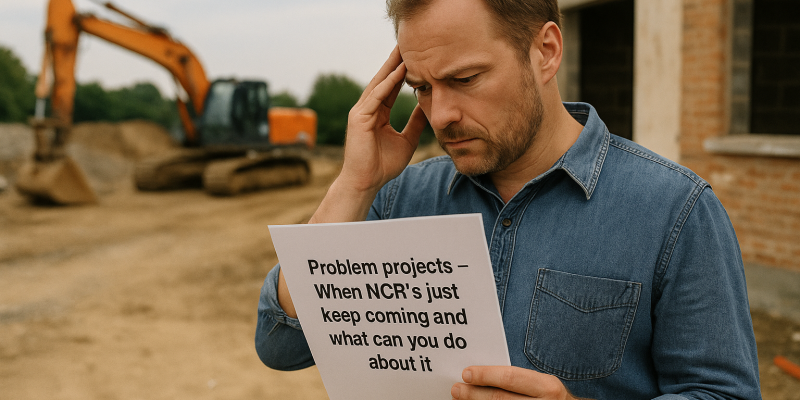Problem Projects – When NCRs Just Keep Coming (and What You Can Do About It)
In construction, few things cause more frustration than a project drowning in Non-Conformance Reports (NCRs). Instead of moving forward smoothly, the team feels stuck in a cycle of repeated issues, rework, and mounting costs.
So why do NCRs spiral out of control — and what can you actually do about it?
What Are NCRs?
A Non-Conformance Report documents when work fails to meet project requirements — whether that’s drawings, specifications, building regulations, or contractual obligations.
One or two NCRs are normal on any project. But when they keep coming, it’s usually a sign of deeper problems.
Why Do NCRs Keep Piling Up?
-
Poor Design Coordination
If drawings don’t align across disciplines (architectural, structural, MEP), clashes will be discovered too late — on site. -
Inadequate Quality Control
Contractors without robust QA systems often rely on reactive fixes instead of proactive checking. -
Communication Breakdowns
Designers, contractors, and subcontractors working in silos can easily miss critical requirements. -
Time & Cost Pressure
Tight programmes sometimes lead to cutting corners, resulting in defects flagged later. -
Lack of Digital Tools
Without proper use of BIM, clash detection, and digital QA tracking, errors are only found once built.
The Impact of Endless NCRs
-
Delays: Fixing issues eats into programme time.
-
Increased Costs: Rework is expensive, both in materials and labour.
-
Damaged Relationships: Constant NCRs can strain client–contractor trust.
-
Reputational Risk: Persistent non-compliance undermines credibility with regulators and clients.
What You Can Do to Break the Cycle
Root Cause Analysis
Don’t just close NCRs — investigate why they keep happening. Is it design errors? Poor workmanship? Unclear instructions?
Improve Design Management
Early clash detection, coordinated information release, and proper Principal Designer oversight can prevent many NCRs.
Strengthen Quality Assurance
Put checks in place before work starts — not just inspections after it’s done. Use digital QA systems where possible.
Better Communication
Regular design team reviews and clear subcontractor briefings help avoid misunderstandings.
Leverage BIM & Digital Tools
Even smaller projects benefit from federated models, digital checklists, and shared issue tracking.
Final Thoughts
Projects rarely fail because of a single NCR — but when they keep stacking up, it’s a symptom of poor design management and weak quality systems. By addressing the root causes, contractors and consultants can turn a “problem project” back on track.
At Celona Consulting, we specialise in design management and BIM coordination. We help contractors and clients reduce NCRs, save time, and improve project outcomes.
Struggling with NCRs on your project?
Contact Celona Consulting for expert support in design management, BIM consultancy, and QA systems that actually work.

